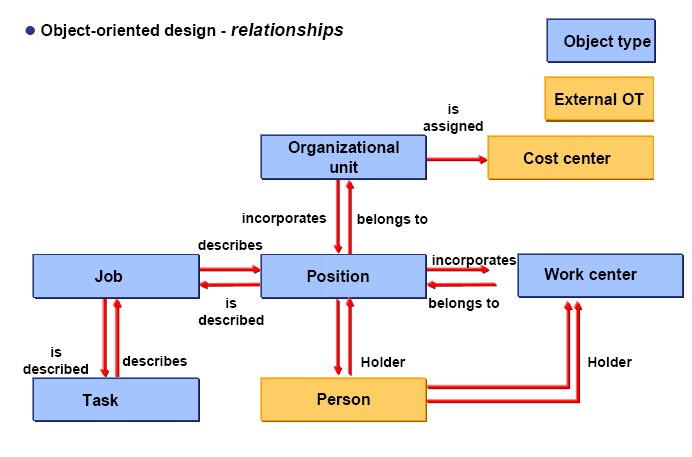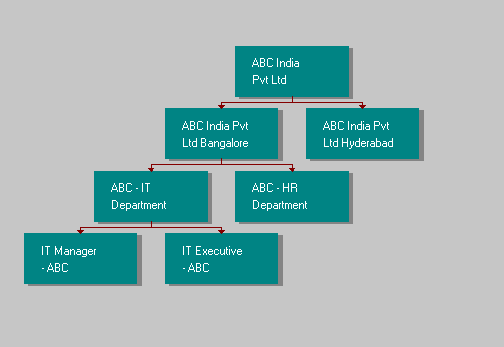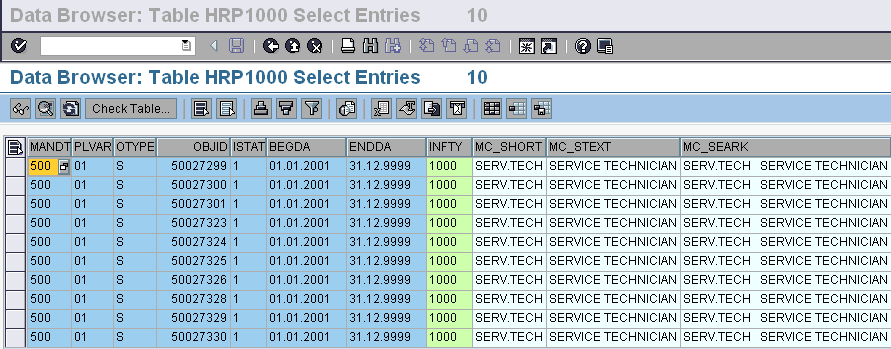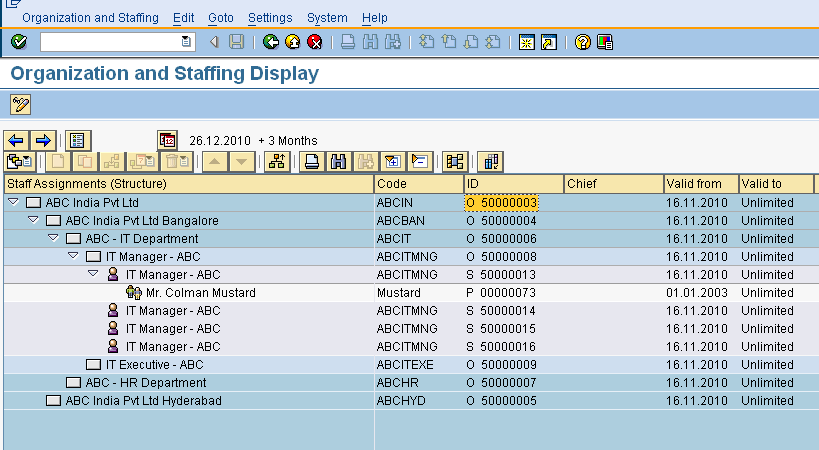This article about organizational management is meant to be a launchpad to our discussion on structural authorizations– an unique and indispensable part of HR security. We ave already have had a brief idea on Org Mgmt or OM when talking about the PLOG authorization object. Lets take the discussion forward to the next level.
OM deals with the representation of the personnel organizational structure within an enterprise within SAP HCM. OM uses the same data model as used by Personnel Planning. The data model uses object-oriented design and uses the concepts of
- Object Types
- Relationships
- Infotypes
The data model can be represented by the following graphic. Note that object types, Person and Cost Center are shown as orange boxes instead of blue ones. These are External Objects and not created in the OM component. However, they have relationships with normal OM objects.

A typical org structure when represented by the same data model might look something like the graphic (transaction PPOC) shown below

In OM, each element in an organization is represented by a distinct object with individual characteristics. Relationships are used to link one object to another. The objects and their relationships can be created and maintained through standard transactions (like PP01). The network created by objects and relationships are flexible enough to facilitate personnel planning, projections and evaluations of the org structure. Customizing is used to enhance the existing object types or create completely new ones. Customizing also allows the creation of new relationships and maintenance of those relationships for existing or new object types.
Each standard object type is represented by a letter code (P = Person, O = Org Unit, S = Position, C = Job) while customized object types are represented by two letters like 9P. Relationships on the other hand are represented by a 3 digit code like 008 (belongs to), 012 (manages). Customer relationships are also 3 letters long but start with Z, like Z20.
The unique object id for an object type is stored in IT 1000 (table HRP1000)

while the relationship between two objects is stored in the IT 1001 (table HRP1001).

Finally, the org structure composed through these two tables is displayed through the PPOSE transaction as shown below


Leave A Comment?
You must be logged in to post a comment.